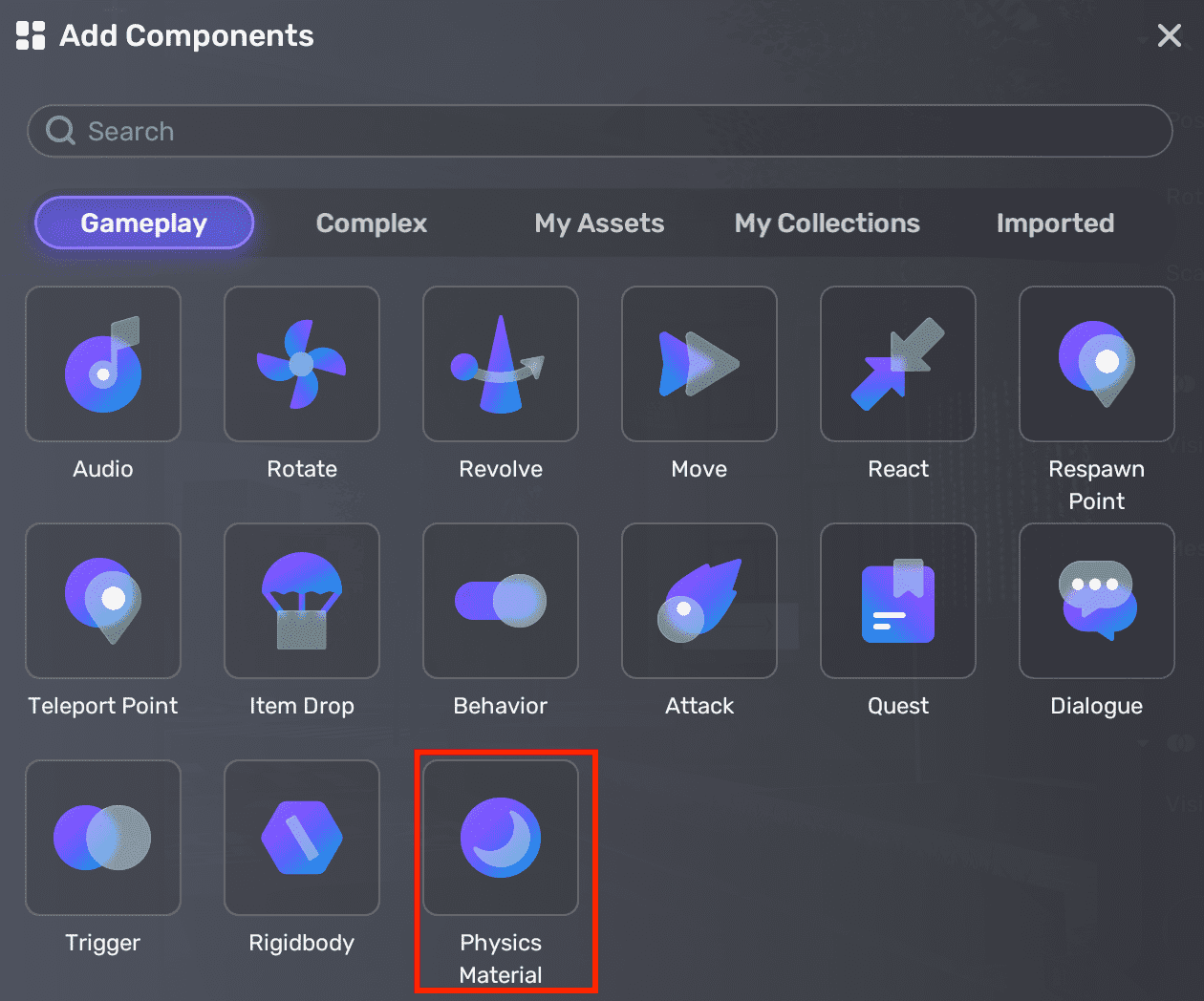Using Physics Material Component¶
The Physics Material component in a game enables you to adjust the physical properties of game objects, such as friction and bounciness, which can be critical for creating realistic physics-based interactions.
To create a Physics Material component click + Component > Physics Material.

Here are the Physics Material properties that you can adjust:
| Property | Description |
|---|---|
| Type | A custom type identifier of Physics Material |
| Dynamic Friction | The amount of friction the object experiences when moving against another object, ranging from 0 to 1. A higher value will make the object more resistant to movement. |
| Static Friction | The amount of friction the object experiences when it's stationary against another object, ranging from 0 to 1. A higher value will make the object harder to move initially. |
| Bounciness | How bouncy is the object? A value ranging from 0 to 1; a higher value will make the object bounce more when it collides with other objects. |
| Friction Combine | How friction between two colliding objects is combined. Options: Average (two friction values are averaged), Minimum (the smaller friction value), Multiply (two friction values are multiplied), and Maximum(the larger friction value). n |
| LBounce Combine | How bounciness of two colliding objects is combined? Options: Average(two bounce values are averaged), Minimum(the smaller friction value), Multiply (two friction values are multiplied), and Maximum (the larger friction value). |
Details¶
Friction is a force that resists movement between surfaces that are in contact. This value is particularly important when stacking objects in a game. Friction is present in two forms: static and dynamic. Static Friction is the force that keeps an object from moving when it is stationary. It takes a certain amount of force to overcome static friction, but once it is overcome, the object will begin to move. When an object is in motion, Dynamic Friction comes into play. Dynamic Friction opposes the motion of objects in contact, slowing them down.
In YAHAHA, contact surfaces that extend beyond a single point, such as two stacked boxes, are treated as having two contact points. As a result, the friction value will be twice that of real-world physics.




